
Introduction
False 9 tactics have become an important tool for many associative teams, especially when building up play or attacking against a medium block. Some of the greatest strikers of all time have played this role: Alfredo Di Stéfano for Real Madrid in the 1950s, Johan Cruyff for the Netherlands and Gerd Müller for Germany in the 1970s, and Lionel Messi for FC Barcelona in the 2010s.
Unlike a traditional striker who stays high and occupies the opposition’s centre-backs, the False 9 frequently drops into deeper positions to link play and create space. This movement can disrupt defensive structures, generate numerical superiority in midfield, and open gaps for teammates to exploit. However, it also carries certain risks that coaches must address to maintain attacking balance. In this article, we analyze some of them.
Advantages of a False 9
Creating Numerical Superiority in Midfield
One of the main benefits of False 9 tactics is the ability to create an extra man in central areas. By dropping away from the defensive line, the striker draws little immediate pressure from centre-backs and becomes available to combine with midfielders. This can result in a numerical advantage, making it easier to progress through the middle and control possession in key zones. Against teams defending in a 4-2-3-1 or similar structures, this extra central player can break the balance of the opposition’s shape.

False 9. Morata drops back to create numerical advantage
We see how Morata takes up a false 9 role, dropping deep to link play and give his team an extra man in center midfield zone.
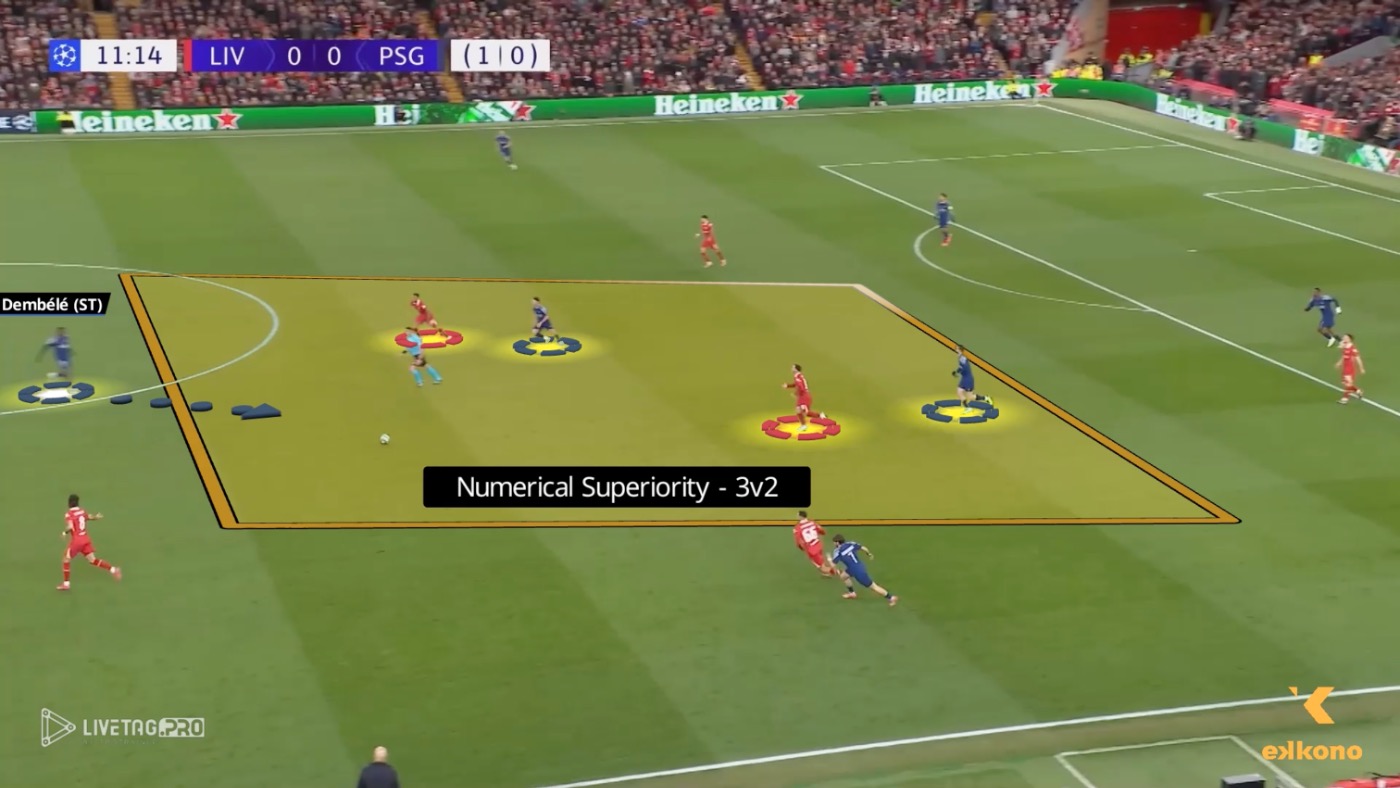
Luis Enrique’s PSG. Dembélé false 9
In this action, Ousmane Dembélé also drops back as a false 9 to receive the ball and creating numerical superiority.
Opening Spaces Behind the Defence
When a centre-back follows the false 9 into midfield, space is left behind their position. This can be exploited by advanced midfielders making forward runs, as well as wingers or full-backs. Even when the defender hesitates to follow, the moment of indecision can be enough to create passing lanes and disrupt the opponent’s compactness. The use of a false 9 therefore not only strengthen the midfield but also create opportunities for penetrating runs that can lead to goal-scoring chances.
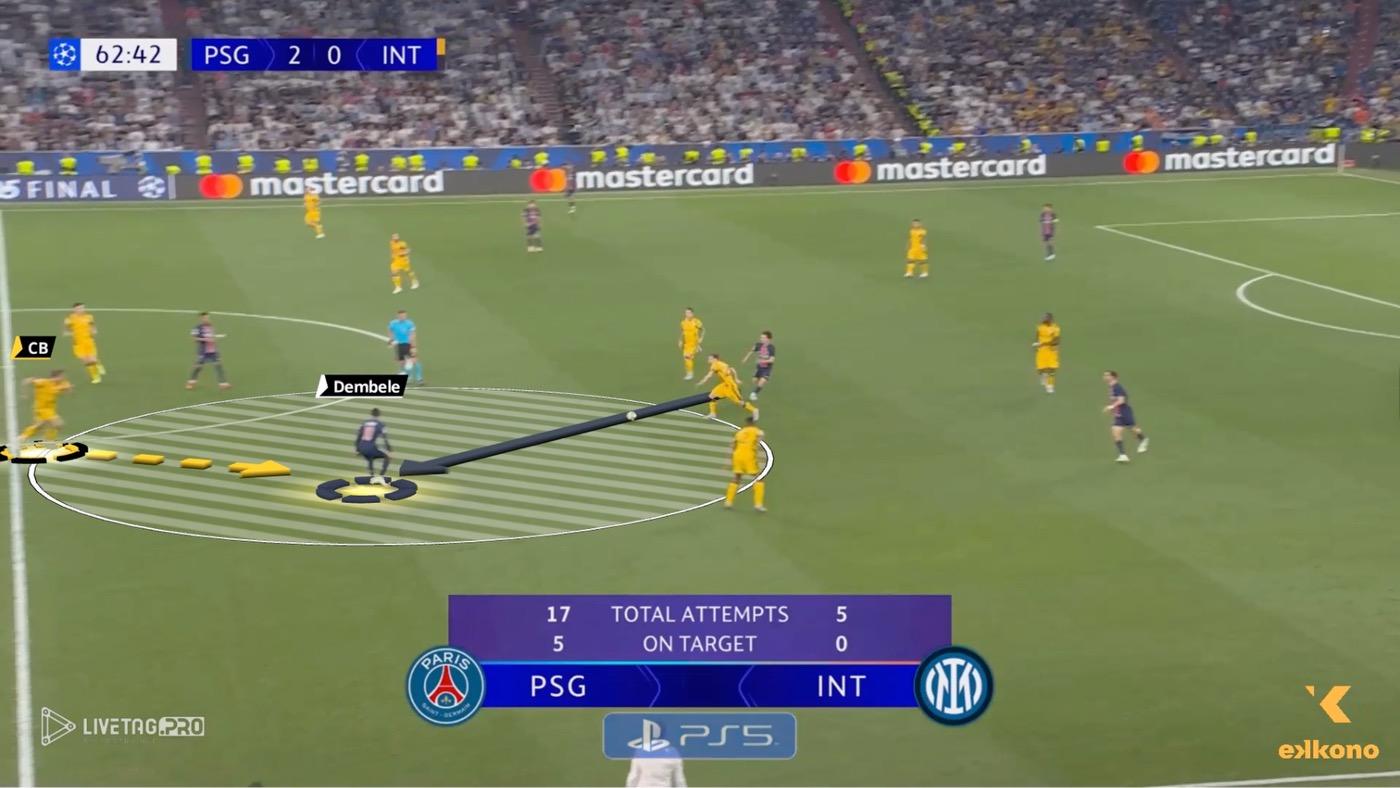
False Nine Role: Inner Forward Movements
Dembélé drops back as a false 9 and forces the center-back to leave his position and follow him. This creates a space behind the center-back, which can be used.
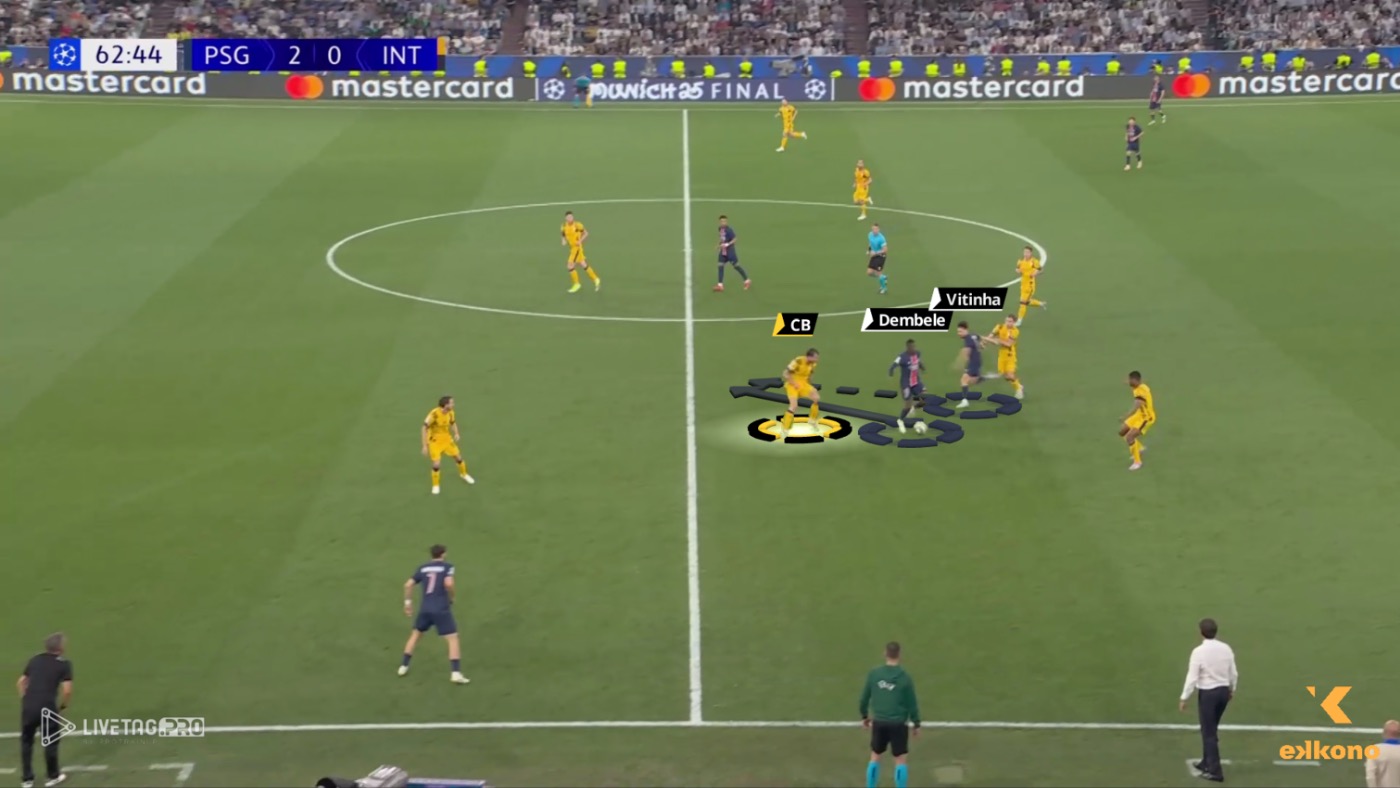
False Nine Role: Inner Forward Movements II
After attracting his direct opponent, he passes to Vitinha (CM) who is already attacking the space behind the center back.
“THE FALSE 9 CAN BE A HIGHLY EFFECTIVE ATTACKING PRINCIPLE, PARTICULARLY IN BUILD-UP PHASES AND AGAINST MEDIUM BLOCKS.”
Disadvantages of a False 9
Fewer Players Arriving in the Box
One potential drawback of the False 9 is that the forward vacates the most advanced position, leaving fewer players to attack the penalty box when the team progresses. Without well-coordinated movements from midfielders or wide players, the attack can lack presence in the box, reducing the chances of converting crosses or final passes into goals.
Loss of Depth in Attack
When the striker moves away from the defensive line without other players making depth runs, the opposition can push up and reduce the space available to play. This compression of the field limits attacking options and can slow down the tempo of play. Coaches applying False 9 tactics must ensure that other players recognise the need to provide depth whenever the forward drops, maintaining a balance between creating central overloads and stretching the opposition.
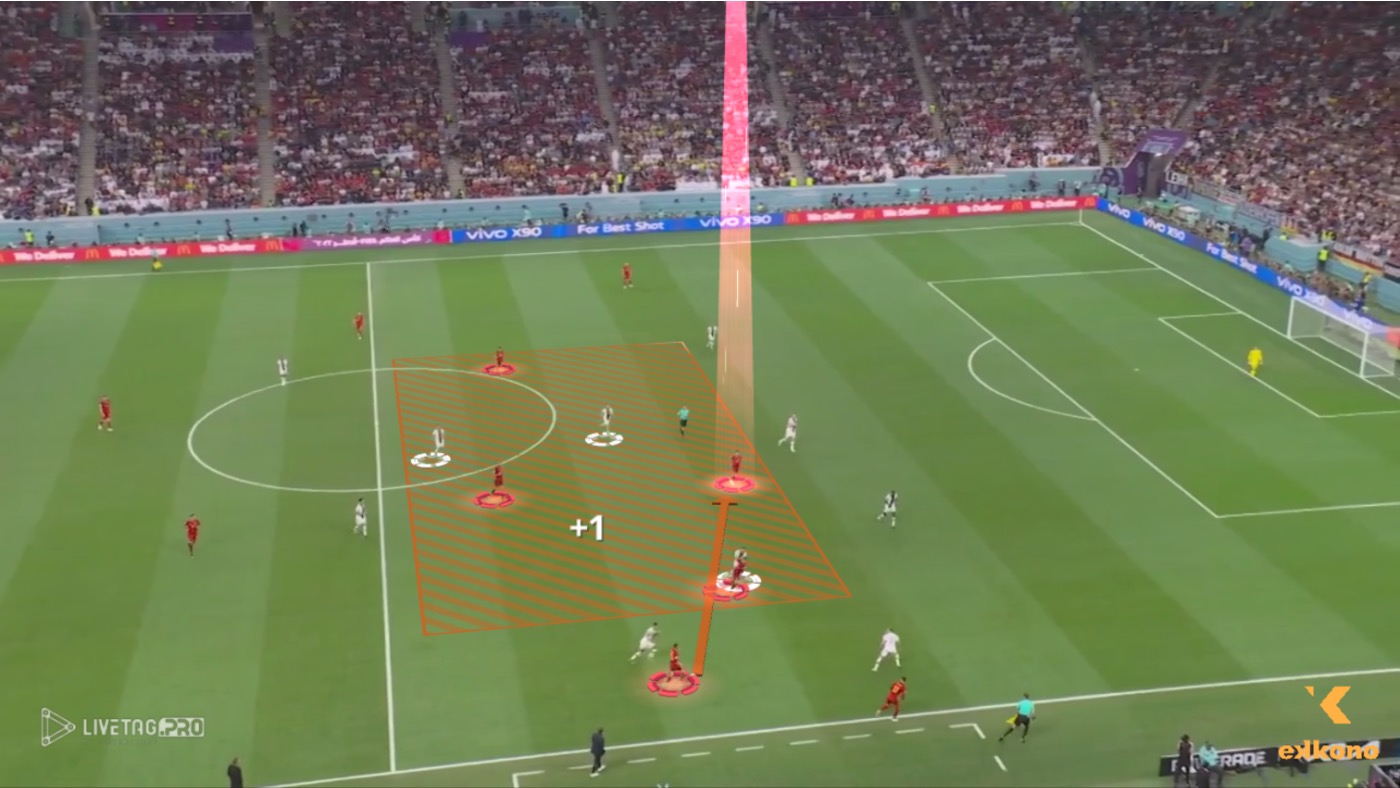
False 9 Disadvantage
In this play, Oyarzabal (ST) drops back to receive the ball, creating numerical superiority in the midfield area.
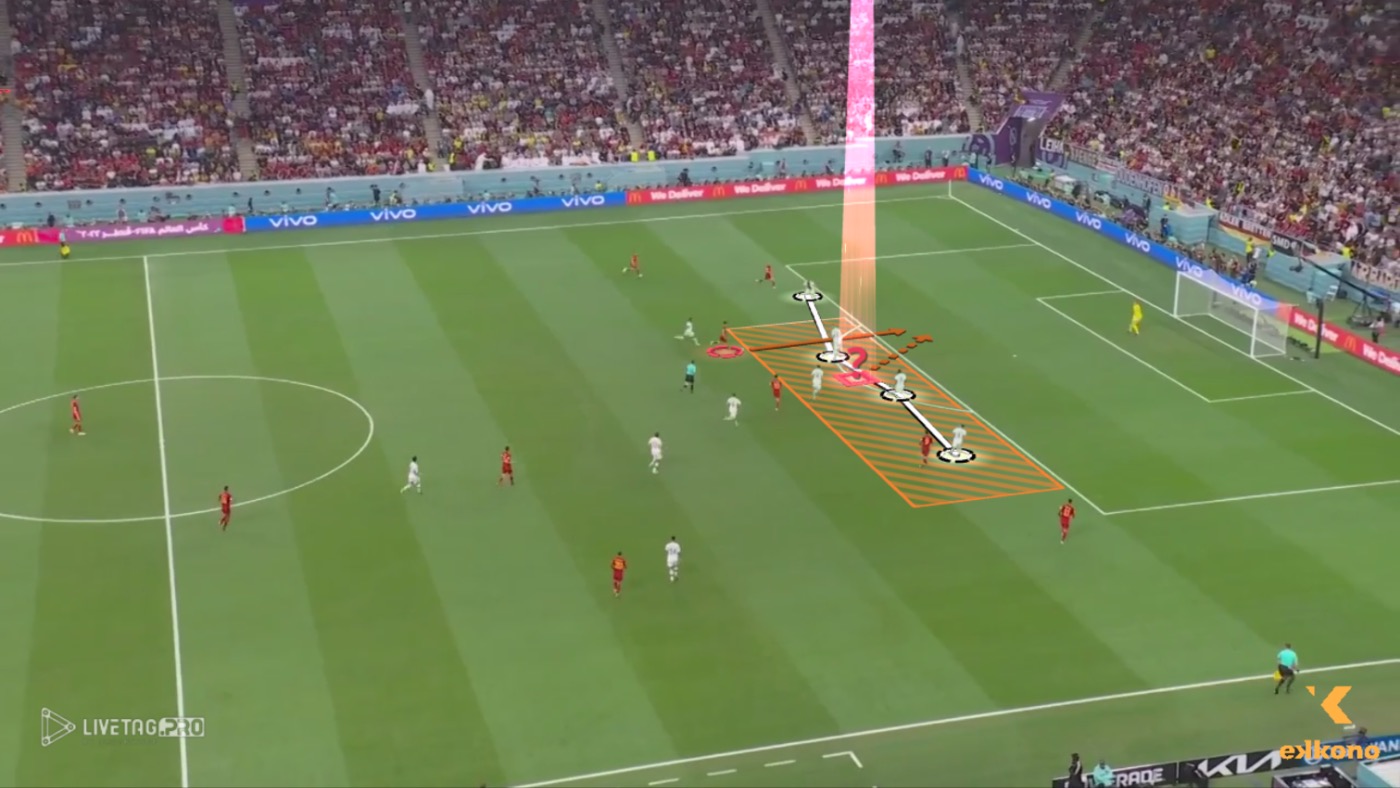
Slide4
However, this leaves Spain without a striker in position to attack the box when the team reaches the final third.
Conclusion
The False 9 can be a highly effective attacking principle, particularly in build-up phases and against medium blocks. It offers the dual advantage of numerical superiority in midfield and the creation of spaces behind the defence. However, it also demands careful planning to avoid a loss of attacking depth and presence in the box. Coaches should assess their squad’s player profiles, ensure proper coordination of supporting runs, and apply False 9 tactics in the right scenarios to maximise its benefits while minimising its risks.

